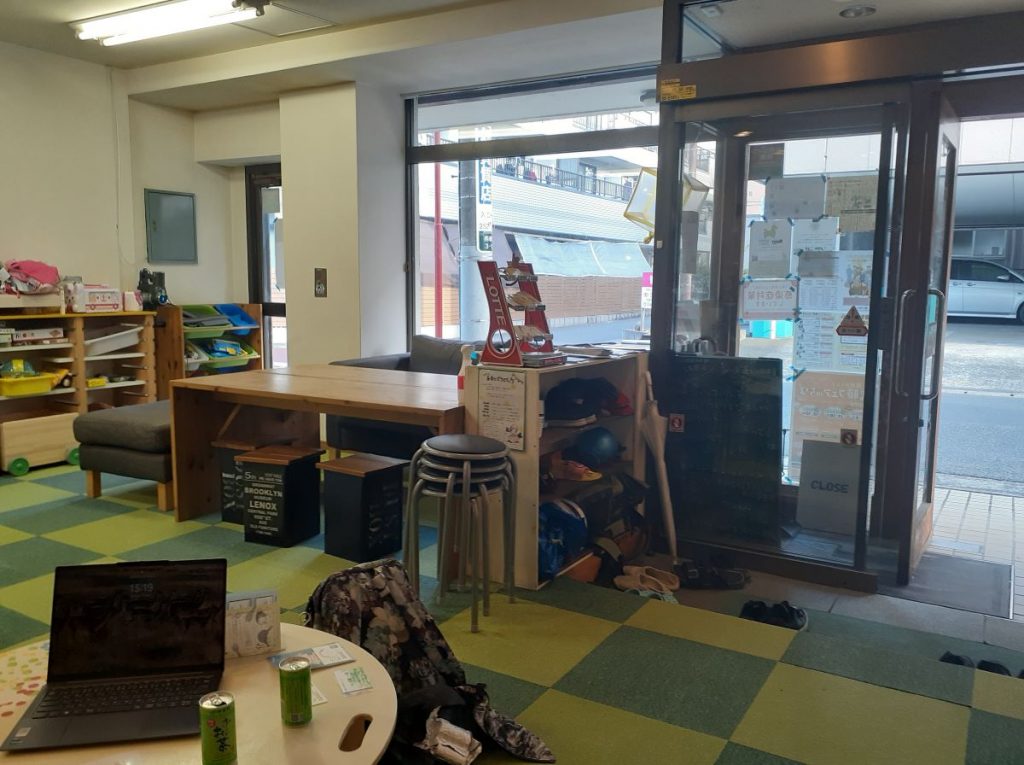What is a Children's Cafeteria? This word, which may feel unfamiliar in English, is a direct translation of the Japanese word, kodomo shokudo. A concept known all too well in Japanese society, a kodomo shokudo is a "cafeteria" or "canteen" that serves families struggling to provide for themselves, usually targeting young children.
It is similar to the American soup kitchen in that it provides meals at a low price or for free.
Kodomo shokudos also, like soup kitchens, thrive during harsh times. For example, when the 2020 COVID-19 pandemic spread and quarantine forced people indoors, there was a rise in mental health problems due to stress from strained relationships. Following this period, kodomo shokudos started to grow as a place of safety for children who couldn't otherwise eat as comfortably and satisfactorily as they wanted.
However, each children's cafeteria is unique. There is no single defining factor.
Some only serve young children, while others welcome youths up to university students. There are also some with no age restrictions. They all strive to provide a safe, comfortable space for everyone, regardless of background.
Tsuganowa Kodomo Shokudo
This is what the Tsuganowa Kodomo Shokudo located in a suburban area in Chiba, strives to be. The Tsuganowa Kodomo Shokudo provides free food, counseling, and a place for people to interact and rely on each other. Ms Terumi Tanaka — affectionately called Teru-san — debunks the assumption that children's cafeterias should be available only for the young.
"Some people might make bad assumptions about older, more independent adults who use kodomo shokudos to buy their food. However, I personally believe that if this place puts more people at ease, I have no problem welcoming anyone," she explains.
Food Drive
In collaboration with the Tsuganowa Shokudo, my school organized a food drive to donate the collected food to the cafeteria.
We set boxes all over the school, including the cafeteria, classrooms, and shoe lockers, to include as many students as possible.
But first, we had to check in with Teru-san about what to consider when deciding to contribute.
Pre-Project: Rules at the Children's Cafeteria
We had a brief interview with Teru-san, asking her about how we could help her. The answer, in short, was surprising: "Don't send a lot of food."
She went on:
"Don't send large amounts of expired food. The children's cafeteria often receives boxes and boxes of food donations from organizations and NPOs. While these are great acts of generosity, they can sometimes be, in other words, arigata meiwaku." (有難迷惑)
There was one instance where a company sent stacks of boxes overflowing with their products — all expired. Expiration dates are never precise, but as a non-profit organization made to help children, food poisoning or any accidents cannot be allowed to threaten their business. Even small things, such as sending rice in paper bags, could be dangerous. That is because the packages are looser compared to tightly sealed plastic bags, and allow insects to crawl inside.
Avoid rotten food and "fresh" produce, rice, and bland emergency canned food. Although many groups send emergency food, Teru-san wishes to avoid serving them as most products lack taste and are not the best choice to serve children.
"Please educate yourself before attempting to show kindness," she says firmly. "We are not a waste disposal company."
Cooking at the Cafeteria
We hoped to help in any possible way. Aside from donating the food we collected using Teru-san's criteria, we decided to help her in the kitchen by preparing food for the children.
When it came to communicating and interacting with the kids on the day of, there were many moments of shocking realization.
One was the realization that we lived and grew up in vastly different worlds.
Often volunteers would try to communicate with the children and ask seemingly innocent questions, such as "What are your plans for the upcoming holidays?" or "What do your parents usually cook for you?"
Again, it was another instance of sincere generosity gone unexpectedly wrong.
Most of the time we cannot immediately see the effect of our words on the recipients. That makes it harder to correct our mistakes.
Hands-on Learning
However, Teru-san encouraged us to allow the children to help with the cooking (with close supervision). That involved some of the chores deemed more "dangerous," for example, cutting or cooking with a frying pan.
For some, dealing with these dangerous tools is part of their daily life. But for others, especially young children, learning to use them to provide for themselves for possible emergencies is crucial.
Another rule is: Don't hurt yourself or others. Stress and loneliness from difficult family situations often lead to the spreading of those negative emotions by attacking others or turning to self-harm.
Instances of violence are often seen in the kodomo shokudo. This is especially true for children who struggle to deal with the situation they are put in. Above all else, children's cafeterias should provide comfort and ultimately a place to feel more positive about life.
This article was first published on JAPAN Forward on June 3, 2024.
